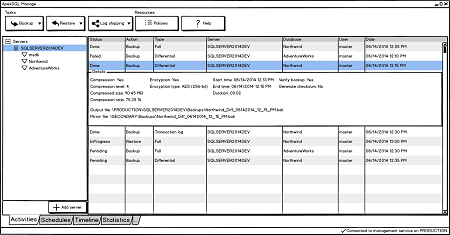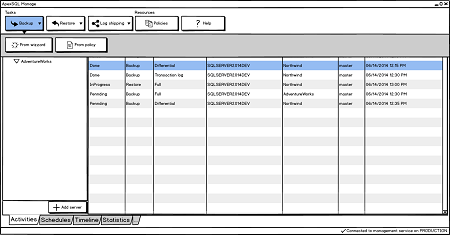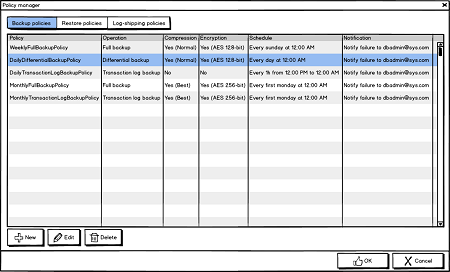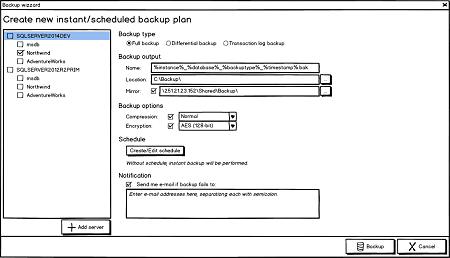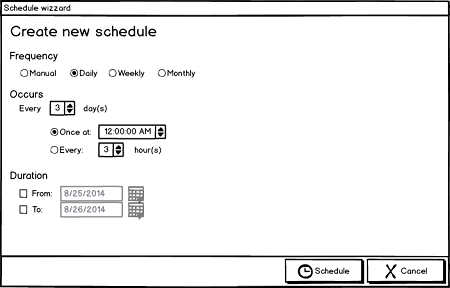We are announcing the upcoming release of a new enterprise tool – ApexSQL Backup that enables you to manage and automate backup jobs while preserving the backup chain for easy point-in-time restoration (database rollback). In addition, it offers automation of restore and log shipping jobs. ApexSQL Backup also increases backup security by automatically performing backup verification.
ApexSQL Backup stores details of all backup activities and enables cross server backup management. The Activity tab offers an easy access to activities details, such as activity status and results, compression and encryption details, time metrics and much more.
Similar to the server overview, database view offers a historical view of backup activities on a database-level, displaying both backup and restore activities for all backup types.
In addition to the process of backup automation, ApexSQL Backup offers instant backup creation, as well as instant backup restoration. User can choose to create a backup using a simple wizard, or from already predefined template/policy which greatly improves the time needed for preparation of the backup process, and diminishes possibility of human error.
ApexSQL Backup offers many predefined templates for backup plans, which can be used or edited by the user. Utilizing these plans saves significant amount of time through by limiting repetition and utilizing the quick, one-step wizard:
The Policy manager allows quick and easy overview of all predefined and user-created policies. From here, new policies can be created, and existing policies can be edited or deleted. For better overview, policies are grouped by jobs.
Create your own backup plan and configure it by selecting some of multiple options including the backup type selection, output details, compression, and encryption details, create or add a predefined schedule to the plan or set an alert which will notify you via email whenever a scheduled job fails.
Customizing of a schedule through a quick wizard enables specifying frequency of activity, occurrence, as well as duration:
September 3, 2014



